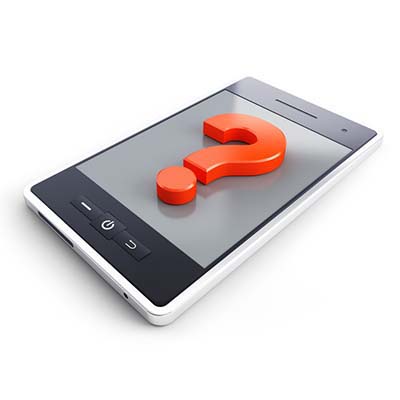Tip of the Week: Moving Your Apps to Your New Phone

While it feels great to power on a new phone and marvel at its slick new interface and features, you might feel frustrated by the fact that you now have to reinstall all of the applications and data that was on your original device. This week’s tip is dedicated to helping you make this process easier and more efficient for an Android smartphone.
First, you need to make sure that your Android’s data can be retrieved by your new device, so make sure that it’s backed up properly. You might even have backup implemented by default, so you want to check before doing anything else.
To check, open up your Settings. Next, look for Backup & reset. You’ll have to flip the switch for Back up my data. You’ll be brought back to the previous menu to select Backup & reset again. Be sure to check your Android account and make sure that the correct one is set as your Backup account. The final step here is to make sure that your account is toggled to automatic restore, ensuring that you’ll be able to restore the settings of your preferred Android account.
Now that your Android’s backup service has been enabled, you’ll be able to save your personal settings and application data right to Google Drive. Once these steps have been taken, it’s time to actually restore your applications and settings to your new device.
The Restoration Process
Thankfully, once you’ve actually gone through the preliminary activity of setting up which account you want to restore, the process itself is relatively simple. For Android phones running the Lollipop version of the Android operating system, this feature can be used when you boot up the device for the first time, or upon initiating a factory reset.
- Select the arrow at the welcome screen when setting up your phone.
- Select your System language and plug in your information for the Wi-Fi network connection.
- Select Accept and continue.
- You’ll then be able to copy your Google accounts, apps, and data from another device. If you don’t want to do this, you can continue simply by logging into your Google account.
- Click Accept for the privacy statement.
- Go to your Google services page and enable the backup service for your account.
- Select your preferences and click Next.
- You can then add an email account by selecting Add another email. If you don’t want to do this, just select Not now and hit Next.
- Now you can restore apps from the “Which device?” menu. You’ll see all of your Android devices here. Select the device with the apps that you want to restore. If you don’t want to restore anything, just select the arrow next to the Restore option and select that you’d rather not restore anything.
- Finally, select the device with the configurations that you want to restore from. Hit Restore and you’re all set.
Once you’ve done all of these steps, you’ll want to make sure that you have enabled security on your phone. For more information about how to maximize your business’ productivity with mobile devices, reach out to us at (317) 705-0333.
Have You Considered What You’re Really Losing When You Lose Your Phone?

Losing a smartphone can be a problem for anyone. For the modern business, it can really cause issues. Mobile devices are notorious for housing a lot of personal information, which makes them extraordinarily dangerous to lose track of. How much is at stake with mobile devices going missing; and, what kind of information is stored on these devices that makes them so dangerous to misplace?
To get started, let’s think about the information that’s being put at risk. Here is a list of information that could possibly be stolen from mobile devices–a surprising amount of data for most users, to say the least.
- Payment information: The applications on your device could potentially be storing credit card numbers or bank routing numbers, which could become problematic if stolen. Hackers could make off with all of your precious, hard-earned cash.
- Passwords and usernames: If you use your device’s web browser, it’s likely that you have passwords and usernames saved on it–even if it’s been done accidentally. These usernames and passwords can be stolen from the device, or used on the device by whoever is accessing it.
- Application data: There are a lot of applications installed on your business’ devices, and these applications store lots of information that a hacker could have a field day with. Even if applications are locked behind a login screen, these accounts can be infiltrated if the login credentials are stored on the device
- Cloud storage: Access to cloud storage is one of the best things about mobile devices, but if you lose one, you’ll be compromising any sensitive data that your account has access to. Any information that’s shared with your device will be accessible by whoever finds your misplaced device.
- Social media accounts: If you have social media applications on your device, it’s likely that you have the password and username saved to the device. This means that anyone who finds your device will have access to your social media accounts, ready to use for whatever vile purposes they want.
- Email: You’d be surprised by how much information you keep hidden in your email inbox. Think what would happen if any of your countless messages was accessed by a hacker who has found your smartphone. Now THAT’s frightening!
- Contacts: You might not think the people you associate yourself with are valuable targets for hackers, but they certainly are. Contact lists for both business and personal use hold a lot of value, as it essentially becomes a list of potential targets to hit with phishing scams.
Keeping all of this in mind is of the utmost importance, especially if you want to make sure your mobile devices don’t become a liability in the event of a loss scenario. To learn more about how you can secure your business’ devices, reach out to us at (317) 705-0333.

